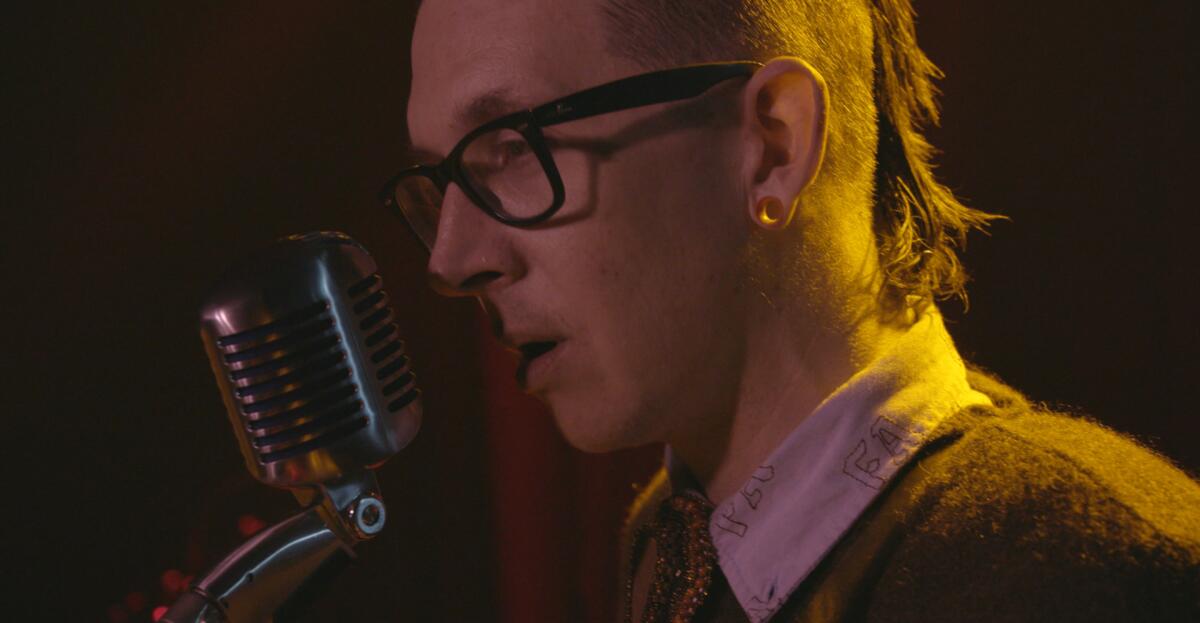Review: Sterlin Harjo’s affecting ‘Love and Fury’ collects stories of Native American artists

- Share via
The Times is committed to reviewing theatrical film releases during the COVID-19 pandemic. Because moviegoing carries risks during this time, we remind readers to follow health and safety guidelines as outlined by the Centers for Disease Control and Prevention and local health officials.
Writer-director-producer Sterlin Harjo co-created one of the best new TV series of 2021 in “Reservation Dogs,” a frequently funny and quietly haunting dramedy about Indigenous teenagers hanging out and plotting petty crimes in rural Oklahoma. The show‘s premise is broad enough to allow Harjo and his largely Indigenous North American cast and crew to tackle just about any topic related to growing up poor and Native in the heartland.
Harjo’s documentary “Love and Fury” is similar, kind of a catch-all. The film was shot around the world, following a handful of Native American artists and musicians as they share their creations. “Love and Fury” has no real narrative. It’s primarily a collection of vignettes of widely varying strength.
The new comedy, set on an Oklahoma reservation, uses its rich, highly specific sense of place to offer a refreshing take on contemporary teen life.
Sometimes Harjo’s subjects are fiercely engaged with the connections between what they make and who they are, and they speak eloquently about the history of Native American art and how it has survived generations of genocide and government suppression. They discuss the psychological damage done by cultural appropriation, and they analyze the ways that a tradition of community is often ingrained in what Indigenous artists make.
And sometimes they just goof around. But that’s also part of the point of “Love and Fury.” Harjo and his crew capture the diversity within Indigenous culture by turning their cameras on a variety of folks: some toiling on the margins and some experiencing more mainstream success.
Subjects include Pulitzer-nominated “There There” author Tommy Orange, veteran art-folk musician Micah P. Hinson, comedian and performance artist Bobby “Dues” Wilson, jazz vocalist Julia Keefe and more. Some center the Native experience in their work, but many don’t. None can be easily pigeonholed.
The looseness of “Love and Fury” can make it feel self-indulgent, as though Harjo just cut together a bunch of disconnected footage of his friends and colleagues and called it a documentary.
But that’s also what makes the film so affecting. Many of these performances and interviews are incredibly powerful — especially anything involving the opinionated, demon-plagued Hinson and the sweet-natured, passionate Wilson. If Harjo wants to put all these remarkable artists in one place, to let them tell their stories and to show their work, why not? Just like creativity, acts of thoughtful curation have enduring value.
‘Love and Fury’
Rated: Not rated
Running time: 1 hour, 33 minutes
Playing: On Netflix on Dec. 3
More to Read
Only good movies
Get the Indie Focus newsletter, Mark Olsen's weekly guide to the world of cinema.
You may occasionally receive promotional content from the Los Angeles Times.










